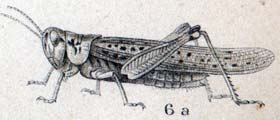Mass Extinction of Insects May Be Occurring Undetected
Few of these extinctions are documented because insects in general are poorly studied, Dunn notes. In addition, insects are small and difficult to find, making it difficult to confirm whether species have vanished for good.
In some cases it's even difficult to demonstrate that larger species are totally extinct, said entomologist Jeff Boettner of the University of Massachusetts at Amherst. For example, Boettner points to the ongoing controversy over the recently rediscovered ivory-billed woodpecker (Campephilus principalis).
"It might not be so easy to confirm that birds are extinct, let alone insects, when we don't even know about the status of one of the largest woodpeckers in the U.S.," he said.
Most of the 70-odd insect extinctions that have been officially recorded are of charismatic species, such as butterflies, or from small habitats that could be exhaustively searched, such as the Hawaiian islands, or from parts of the world that have been extensively studied, such as the United States.
Disappearing Act
Some insects may be lost in ways that aren't considered for larger species.
For example, research suggests that many insects have narrower geographic ranges than larger animals and plants, meaning that it is much easier to totally obliterate the habitats these insects need to survive.
One extinct species of insect, the Rocky Mountain locust (Melanoplus spretus), was once so numerous that in the 1800s it was described as the single largest barrier to westward expansion in the U.S., Dunn says.
The locusts migrated by the millions between breeding and feeding grounds. Their swarms averaged six feet (two meters) high and hundreds of feet (tens of meters) across.
But the bug's breeding ground was a small, restricted type of floodplain habitat. Destruction of these habitats to create new cattle pasture was enough to drive the species to extinction by the turn of the 20th century.
Another way insects may be lost is through a process known as co-extinction, Dunn said. Many insects go extinct when species they rely on disappear. Most fish, birds, lizards, and other animals have their own specialized mites and lice, so when the host species die, their parasites die with them.
Also, plant-eating insects are likely to go extinct when the plants they feed on die. A massive population decline in chestnut trees due to chestnut blight in the 20th century took at least three species of butterfly with it.
Boettner agrees that co-extinction could be a major factor. "In ecology you rarely lose one thing. For every species of mammal, bird, plant, insect, and so on, there are at least two species of parasites that specialize on them as hosts."
Similarly, losing some species of insects could have surprising effects for people.
One 1997 study estimates that a third of world crop production depends on pollination by wild insects. Without these bugs in the ecosystem, an estimated 117 billion dollars (U.S.) worth of crops would fail.
However, "many insects, just like many vertebrates, don't have a role that we would miss if they were to go extinct," Dunn noted. "For these species, the reason for conservation cannot simply be utilitarian, just as it is not for many vertebrates."
"We conserve tigers and pandas because we value them culturally and aesthetically, and because it seems wrong to let them go extinct due to solely human factors," he said.
Free E-Mail News Updates
Sign
up for our Inside National Geographic newsletter. Every two
weeks we'll send you our top stories and pictures (see
sample).
MOST POPULAR STORIES
Photo in the News: Oldest Known Maya Mural Reveals Royal TaleArchaeologists have revealed the final wall of the earliest known Maya mural, sa... |
Oldest Known Maya Mural, Tomb Reveal Story of Ancient KingArchaeologists have revealed the final wall of the earliest known Maya mural, sa... |
King Kong Island Home Is Pure Fantasy, Ecology Experts SaySkull Island, the mythical home of the great ape King Kong, is supposed to lie i... |
|
||||||||||









